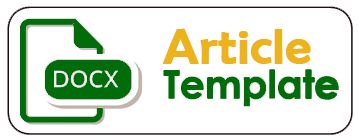Edukasi Masyarakat Cermat terhadap Iklan dan Promosi Obat Tradisional di Desa Penyengat Olak Kabupaten Muara Jambi
DOI:
https://doi.org/10.36565/jak.v2i3.138Keywords:
addvertising, community, education, promotion, tradisional medicineAbstract
Advances in technology and the increasing desire of the community to use traditional medicines, traditional medicines are no longer used as ingredients for family consumption, but have become merchandise. Advertising is a way for corporate producers to promote their products, especially traditional medicines. The POM RI released 76% of advertisements for traditional medicines that did not comply with The Regulation. In order to protect the public against the possibility of distributing drugs and traditional medicines that do not meet the requirements due to false advertising and information, it is necessary to educate the public to increase public knowledge and understanding of traditional medicines and medicines. Penyengat Olak village, Muara Jambi district is one of the partners of the Ministry of Health's Jambi Poltekes whose community has never been educated on traditional medicinal advertisements. The implementation method used is survey, observation, interview, discussion, question and answer, and evaluation. This community service activity was attended by 20 people. The result of this activity is an increase in public knowledge and understanding of the correct traditional medicinal advertisements so that people can be more careful and careful in choosing traditional medicinal products, and do not easily believe in incorrect advertisements, and the use of family medicinal plants in the environment around the house. , all participants attended health education from start to finish and most of them actively participated during the activity. It is recommended that the community is always communicative with local health workers to understand the treatment being carried out, and to increase the role of health workers in collaboration with district health offices to provide information, especially related to traditional medicinal advertisements
References
Alifahmi, Drs. Hifni, M.Si. 2005 . Sinergi Integrasi Iklan, Komunikasi Public Relations, Pemassaran dan Promosi. Bandung: Mizan Media Utama
Badan POM RI, 2018, Laporan Tahunan Badan POM, Jakarta
BPS RI, 2014, Laporan Tahunan BPS, Jakarta
Glanz, K., Rimer, B.K., & Viswanath, K., 2008. Health behavior and health education: Theory, research, and practice (4th ed.). San Francisco: Jossey Bass.
http://bali.tribunnews.com/2019/02/06/iklan-obat-tradisional-paling-banyak melanggar-aturan-begini-penjelasan-bbpom-denpasar
http://p3i-pusat.com/lampiran-2-pedoman-periklanan-obat-tradisional/Industri.kontan.co.id (diakses pada tanggal 10/06/15 pukul 15:00).
Morissan, M.A.. (2010). Periklanan Komunikasi Pemasaran Terpadu. Jakarta: Kencana Prenada Media Group
Niken Restaty, SM, 2005. Modul Pengantar Periklanan. Fakultas Ilmu Komunikasi Universitas Mercu Buana, Jakarta.
Notoatmodjo, S., 2010. Metodologi penelitian kesehatan. Jakarta:
Rineka Cipta.
Notoatmodjo, S., 2012. Ilmu perilaku kesehatan. Jakarta:
Rineka Cipta.
Peraturan Kepala Badan POM RI No. HK 00.06.323.295 Tahun 2009 tentang Pedoman Pengawasan Promosi dan Iklan Obat.
S.Setiawati & AC Dermawan, 2008. Proses Pembelajaran dalam Pendidikan Kesehatan. Jakarta: TIM
U Undang-undang Republik Indonesia Nomor 36 Tahun 2009 tentang Kesehatan.
Zamroni, Mohammad. (2009). Fisafat Komunikasi Pengantar Ontologis, Epistemologis, Aksiologis. Yogyakarta: Graha Ilmu
Downloads
Published
Issue
Section
License
Authors who publish with this journal agree to the following terms:
- Authors retain copyright and grant the journal right of first publication with the work simultaneously licensed under a Creative Commons Attribution License that allows others to share the work with an acknowledgment of the work's authorship and initial publication in this journal.
- Authors are able to enter into separate, additional contractual arrangements for the non-exclusive distribution of the journal's published version of the work (e.g., post it to an institutional repository or publish it in a book), with an acknowledgment of its initial publication in this journal.
- Authors are permitted and encouraged to post their work online (e.g., in institutional repositories or on their website) prior to and during the submission process, as it can lead to productive exchanges, as well as earlier and greater citation of published work (See The Effect of Open Access).








